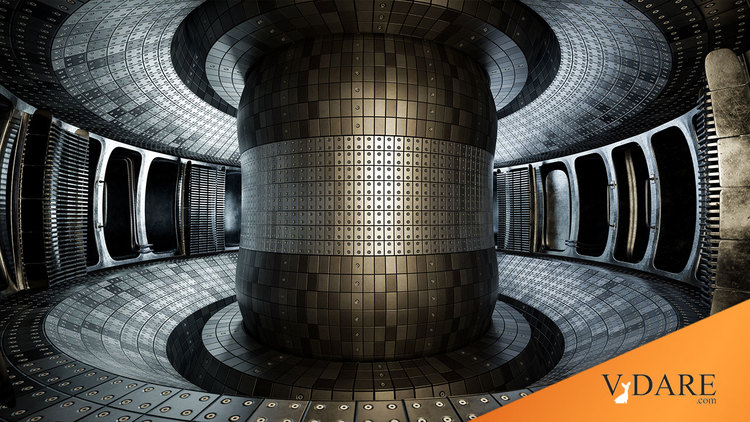


By Steve Sailer
12/12/2022
I first heard about fusion power when I was seven in 1966 in a science & technology comic strip in the L.A. Times’ Sunday funny papers. Fusion sounded promising.
So, I’ve become a bit jaded over the last 56 years about fusion energy coming Real Soon Now. But, from today’s Financial Times, it appears Lawrence Livermore has finally achieved the first major milestone: getting more energy out of a fusion reaction than you put in.
US scientists boost clean power hopes with fusion energy breakthrough
Net energy gain indicates technology could provide an abundant zero-carbon alternative to fossil fuels
Tom Wilson in London 9 HOURS AGO
US government scientists have made a breakthrough in the pursuit of limitless, zero-carbon power by achieving a net energy gain in a fusion reaction for the first time, according to three people with knowledge of preliminary results from a recent experiment.
Physicists have since the 1950s sought to harness the fusion reaction that powers the sun, but no group had been able to produce more energy from the reaction than it consumes — a milestone known as net energy gain or target gain, which would help prove the process could provide a reliable, abundant alternative to fossil fuels and conventional nuclear energy.
The federal Lawrence Livermore National Laboratory in California, which uses a process called inertial confinement fusion that involves bombarding a tiny pellet of hydrogen plasma with the world’s biggest laser, had achieved net energy gain in a fusion experiment in the past two weeks, the people said.
Although many scientists believe fusion power stations are still decades away, the technology’s potential is hard to ignore. Fusion reactions emit no carbon, produce no long-lived radioactive waste and a small cup of the hydrogen fuel could theoretically power a house for hundreds of years.
… The fusion reaction at the US government facility produced about 2.5 megajoules of energy, which was about 120 per cent of the 2.1 megajoules of energy in the lasers, the people with knowledge of the results said, adding that the data was still being analysed.
Of course, we’ve been doing fission reaction for 80 years, but we’ve failed to get all that cost-effective at it.